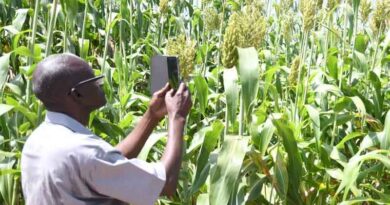
Save Soil Campaign: Visionary Awareness or Vanishing Act? A Closer Look at Sadhguru’s Global Movement
From a 30,000-km bike ride to UN partnerships and a viral Joe Rogan podcast, Sadhguru’s Save Soil campaign sparked a global conversation on soil degradation — but three years later, questions linger about what’s actually changed on the ground.
28 July 2025, New Delhi: Launched with much fanfare in 2022, Sadhguru Jaggi Vasudev’s “Save Soil” campaign aimed to be a landmark global movement to address one of agriculture’s least-discussed crises — soil degradation. With a 30,000 km solo motorcycle journey across 27 countries, meetings with heads of state, celebrity endorsements, and youth rallies, the campaign initially drew global attention. But three years on, the dust has settled — and questions remain. What became of the promises? Where do things stand now?
The Grand Beginning
The Save Soil movement, initiated under the banner of Conscious Planet, sought to mobilize both citizens and governments to take urgent action. The core objective: ensuring a minimum of 3–6% organic content in agricultural soil globally, as a safeguard against looming food insecurity, biodiversity collapse, and climate risk.
Backed by international organizations like the United Nations Convention to Combat Desertification (UNCCD), FAO, and World Food Programme, the campaign struck a chord with many. Sadhguru’s journey drew massive crowds, global media coverage, and policy dialogues in countries from Europe to South Asia.
Government Promises and Policy Push
By mid-2023, the campaign had secured verbal or written support from 81 nations and 10 Indian states, including Gujarat, Rajasthan, Madhya Pradesh, and Karnataka. Memorandums of Understanding (MoUs) were signed to include soil health in agricultural planning. Some states pledged to improve organic carbon levels in degraded lands and promote natural farming.
Nepal, in a symbolic gesture, pledged to plant 30,000 trees to match the kilometers of Sadhguru’s ride, and also initiated discussions on aligning future agricultural policy with soil health goals.
The campaign gained visibility at COP15 of the UNCCD, the World Economic Forum, and COP28, where agriculture and food systems gained space in climate negotiations. India, China, and the United States also announced budget allocations for soil-health related programs, though these were not directly tied to the Save Soil campaign.
Public Mobilization: Real and Relatable
One of the campaign’s biggest achievements was awareness generation. Millions of young people, especially schoolchildren, were encouraged to write letters to their leaders urging policy action. Walkathons, placard rallies, digital outreach, and celebrity endorsements helped “soil” become a topic of dinner table conversations — something unheard of before 2022.
Social media played a crucial role — with over 4 billion digital impressions claimed by the foundation — though independent verification of these numbers is unavailable.
Reality Check: Implementation Still a Long Road
Despite early momentum, the translation of intent into action remains limited. While policy statements were made, there is scant evidence of widespread implementation on the ground. Soil organic matter data from key regions remains largely unchanged. There are no major field-level programs directly attributed to the Save Soil MoUs, and no centralized updates or impact reports are available on the official website as of July 2025.
In India, where the campaign found significant traction, existing schemes like the Soil Health Card, Paramparagat Krishi Vikas Yojana (PKVY), and state-run organic missions have continued, but without clear integration with Save Soil’s roadmap.
Critics have described the campaign as “well-meaning but performative.” Environmental journalist Neelam Rao notes, “Sadhguru raised awareness — and that matters. But without binding policy timelines or accountability frameworks, movements risk fading into tokenism.”
Voices from the Ground
Volunteers, however, paint a different picture. “We held community workshops in rural Telangana and taught farmers about mulching, composting, and regenerative farming,” said Rajesh Iyer, a Hyderabad-based volunteer. “It may be slow, but the seeds are being sown.”
Still, the absence of measurable indicators, such as before-and-after soil carbon data, training outcomes, or state-wise progress, raises eyebrows. Unlike time-bound campaigns like Swachh Bharat, Save Soil has yet to build a publicly auditable progress dashboard.
The Criticism and Controversy
On platforms like Reddit and Indian Twitter/X, some users have accused the campaign of being more branding than substance. Others have linked it to the Isha Foundation’s broader spiritual and fundraising agenda, questioning the mixing of ecological and religious narratives.
A widely shared post said, “Save Soil went from viral to invisible in one year. Great optics, but little follow-through.”
The Isha Foundation has responded by reiterating that the campaign was always intended to be policy-driven and citizen-led, not an on-ground implementation agency.
The Global Context: Did It Make a Dent?
Globally, soil health remains a critical but under-prioritized issue. According to the FAO, 33% of the world’s soils are degraded, and around 24 billion tons of fertile soil are lost annually. While Save Soil raised the alarm, systemic change requires sustained government investment, farmer incentives, and large-scale restoration programs.
Encouragingly, the European Union’s proposed Soil Health Law, the UAE’s Emirates Declaration on Agriculture, and USDA’s Soil Health Initiative are slowly taking shape — influenced in part by global soil-awareness efforts like Save Soil.
Where Does It Stand Now?
As of mid-2025, the Save Soil campaign continues digitally, with the occasional event and regular social media updates. Volunteers remain engaged in awareness drives, but no second global tour or measurable large-scale push has been announced.
The movement’s website lists resources and policy templates for countries, but does not report impact metrics such as improvements in soil health or specific government outcomes post-MoUs.
Final Word
The Save Soil campaign succeeded in one thing: bringing global attention to the invisible crisis of soil health. It turned a niche scientific concern into a dinner-table topic — no small feat in today’s crowded information age.
But as with many grand campaigns, the real test lies in follow-through. Without measurable targets, public data, and ground-level action, even the most visionary movement risks being remembered more for its launch than its legacy.
📢 If You’re in Agriculture, Make Sure the Right People Hear Your Story.
From product launches to strategic announcements, Global Agriculture offers unmatched visibility across international agri-business markets. Connect with us at pr@global-agriculture.com to explore editorial and advertising opportunities that reach the right audience, worldwide.






